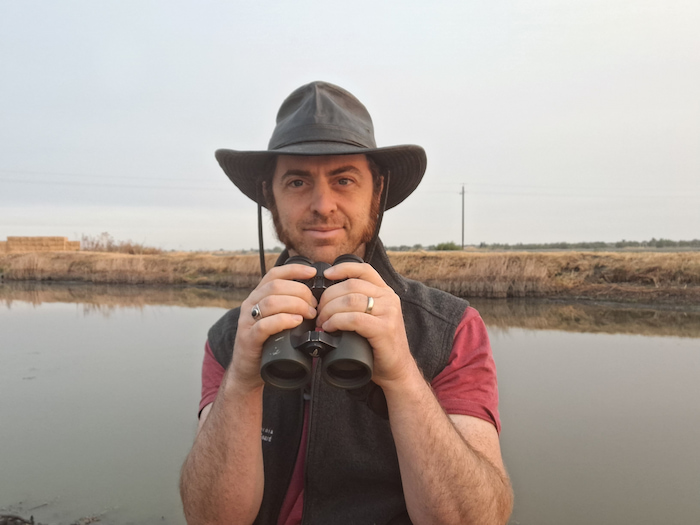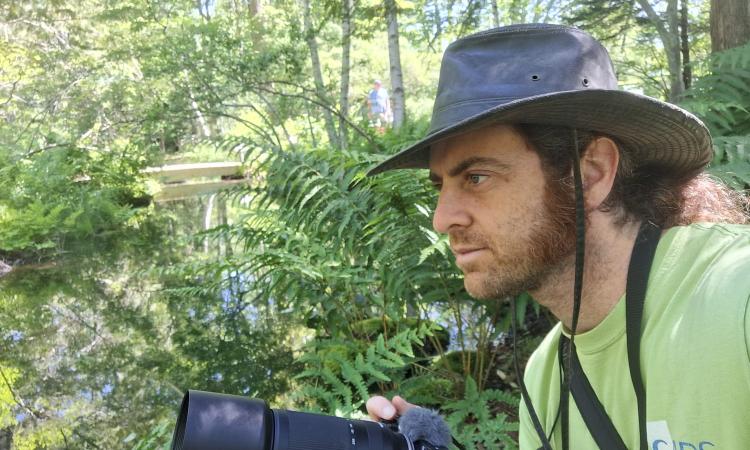I have been a birder since I was six years old. Birds captured my attention and imagination with their incredible beauty, amazing abilities, fascinating characters, and dramatic importance. This enduring interest in birds has included the personal and the professional, the casual and the formal.
About two years ago, my engagement with birds gained a new dimension when I purchased my first wildlife-worthy camera setup; a Sony zv-e10 mirrorless camera and a Tamron 70-300mm lens.
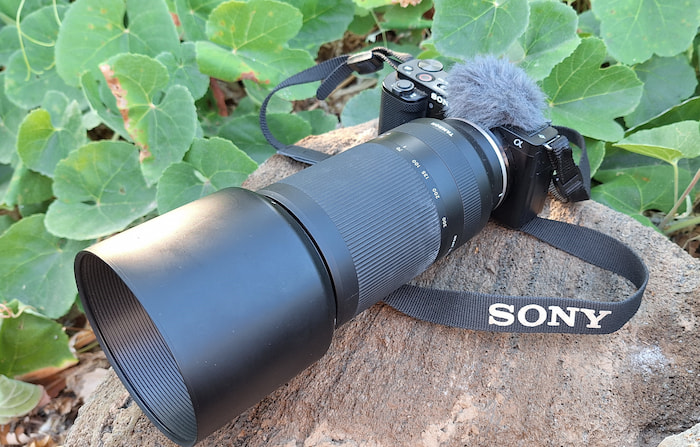
Sony zv-e10 mirrorless camera and a Tamron 70-300mm lens
5 Essential Lessons for Beginner Bird Photographers
- Patience is essential – Slowing down enhances your ability to capture better bird photographs and observe wildlife more closely.
- Common birds offer new wonders – Even birds seen many times before can offer unique photographic moments and renewed appreciation.
- Attention to detail enriches the experience – Bird photography sharpens your focus on behaviours and physical features that might otherwise go unnoticed.
- Photography deepens your connection to nature – Combining birding with photography can lead to a more immersive and rewarding outdoor experience.
- Sharing knowledge expands reach – Using photography to communicate about birds and nature on social media helps engage and inspire a broader audience.
Mastering Patience: How Bird Photography Enhances Your Observation Skills
My interest in this new dimension sprang from my growing effort to share bird, science, and nature information with as wide an audience as possible, including on social media and other digital platforms.
These first years of photography have given me quite a bit of enjoyment and have taught me quite a few lessons.
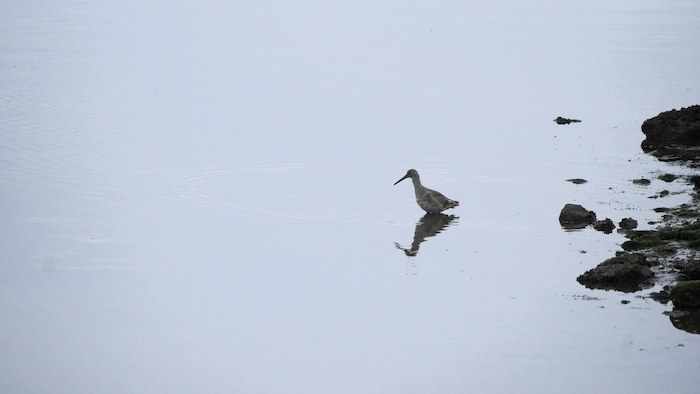
Willet standing in the shallows
One of these lessons has been the value of slowing down even more. As a lifelong birder, I am familiar with the value of slowing down in nature. Moving slowly through an area means fewer startled birds and better views. Slowness and stillness also mean more likelihood of seeing the movement of other creatures and so leads to more observations with more details. But photography has taken my practice of slowing down to a whole new level (much to the occasional annoyance of my wife and daughter). When slowness and stillness, camera and light, bird and I all come together in the same moment of time to capture that hoped-for image, I know I have experienced something very special.
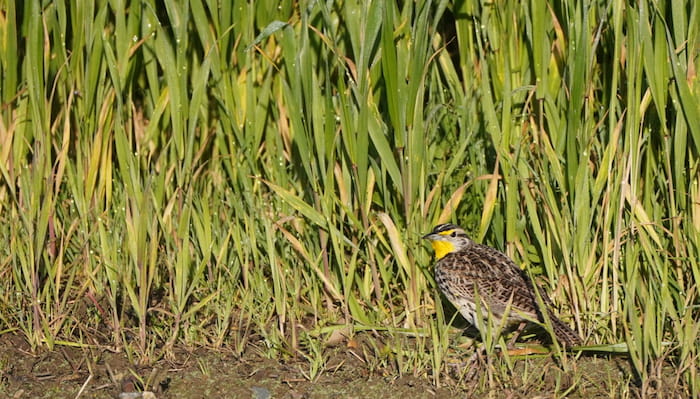
Western Meadowlark standing in the grass
Rediscovering Common Birds: Finding Beauty in Everyday Encounters
Another lesson I have learned from bird photography is a rekindled wonder and joy in the common. Sometimes, seeing a bird that you have seen a hundred or a thousand times before can seem repetitive and even a bit boring. I do not know how often I have heard someone casually dismiss a bird because it is “just another Red-tailed Hawk.” I am often reminded of something that the late, great birder Rich Stallcup used to say in similar situations. He would point out that the person had “never seen THAT Red-tailed Hawk.” Getting a good photograph of a Red-tailed Hawk is non-trivial. In my limited experience, getting good pictures of any bird is non-trivial! I was delighted, for example, to be birding one of my local ponds in the California Delta when a small group of Forester’s Terns flew in and started diving for small fish. I was even more delighted when I was able to get a picture of two of these common birds as they skimmed above the water.
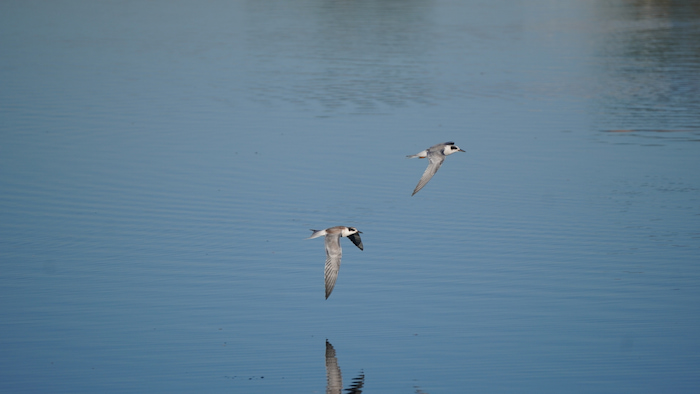
Two Forester’s Terns in Flight
Focusing on the Details: How Bird Photography Sharpens Your Eye for Nature
A third lesson that photography has shown me is an ever-finer appreciation of details. By focusing in on a particular bird at a particular moment, and watching it through my lens, I find myself noticing small details of the features and lives of birds. Sometimes it is noticing the details of behaviour, such as how an adult bird angles an insect into a fledgling’s mouth when delivering food. Sometimes it is seeing a physical feature such as how much more skin is visible around the eye of a bird like this Yellow-billed Magpie as it molts out older feathers, but before the new ones have grown in. The focus and attention needed in bird and wildlife photography seem to heighten my focus and attention to such details, and for me, it greatly enriches the birding experience.

Molting Yellow-billed Magpie
I plan to continue sharing photos, videos, and information highlighting birds, nature, and science. I have a book coming out in the spring of 2025 titled “Birds of the California Delta” that I hope will reach an audience of people who are curious about birds and birding and also who are curious about the fascinating and important place that is the Sacramento-San Joaquin Delta. My aim with all of these efforts is to contribute the accurate and accessible information that is available online and beyond. I hope you join me.
I look forward to the future lessons that bird photography will offer and to the fact that my knowledge-sharing inspires people with wonder and joy for the natural world.
Ready to start your own bird photography journey? Share your favourite wildlife photo with us in our conservation club on social media for more tips and inspiration! Don’t forget to subscribe to our newsletter for updates on birding and photography.
